Items filtered by date: January 2024
The Mystery of Shoe Sizing
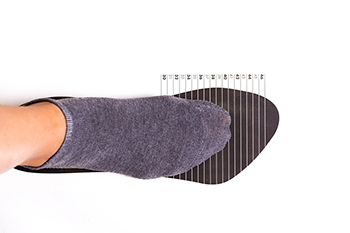
Embarking on the quest for the ideal shoe size is an important yet often underestimated journey. To find the perfect fit, one must prioritize comfort and functionality. Start by measuring both feet, as they can vary in size, and choose the size that accommodates the larger foot. Consider the shoe's width, ensuring ample room for toes without constriction. Pay attention to the arch and heel support, elements that play a pivotal role in overall comfort. Try on shoes later in the day when feet tend to swell slightly, mimicking real-life conditions. Walk around to assess how the shoes feel in motion, checking for any discomfort or pressure points. For detailed information about how to accurately measure the feet, it is suggested that you schedule an appointment with a podiatrist.
Getting the right shoe size is an important part of proper foot health. Seek the assistance of one of our podiatrists from Parkwood Podiatry. Our doctors will provide the care you need to keep you pain-free and on your feet.
Getting the Right Shoe Size
There are many people who wear shoes that are the incorrect size, negatively affecting their feet and posture. Selecting the right shoes is not a difficult process, so long as you keep several things in mind when it comes to choosing the right pair.
- When visiting the shoe store, use the tools available to measure your foot.
- Be sure there is ‘wiggle room’. There should be about an inch between your toes and the tip of your shoes.
- Do not always assume you are the same size, as manufacturers run differently.
- Purchase shoes later in the day, as your feet swell as the day progresses.
- If a shoe is not comfortable, it is not suitable. Most shoes can’t be ‘broken in’, and comfort should be the ultimate goal when it comes to choosing the right pair of shoes
As our feet hold our body weight and keep us moving, it is important to treat them right. Picking the right pair of shoes can provide your feet comfort and mobility without pain.
If you have any questions, please feel free to contact our offices located in Brunswick and Hinesville, GA . We offer the newest diagnostic and treatment technologies for all your foot care needs.
Identifying Common Symptoms of Ankle Sprains
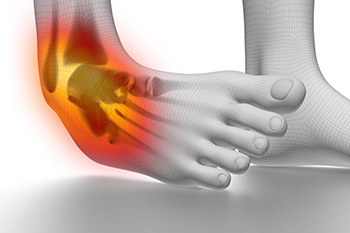
Ankle sprains, a prevalent injury often stemming from sudden twists or rolls, have a distinctive set of symptoms. One prominent indicator is pain, typically localized around the affected ankle, varying in intensity based on the severity of the sprain. Swelling is another hallmark symptom, as the injured ligaments prompt the body's natural response to inflammation. Limited range of motion, especially when attempting to bear weight or move the ankle, is a clear sign of an ankle sprain. Bruising may emerge due to blood vessel damage, presenting as discoloration around the injured area. Tenderness to the touch and the sensation of instability are additional signs of a sprain. Recognizing these symptoms is imperative, guiding individuals to seek appropriate medical attention. If you have sprained your ankle, it is suggested that you visit a podiatrist who can correctly diagnose and treat this condition.
Although ankle sprains are common, they aren’t always minor injuries. If you need your ankle injury looked at, contact one of our podiatrists from Parkwood Podiatry. Our doctors can provide the care you need to keep you pain-free and on your feet.
How Does an Ankle Sprain Occur?
Ankle sprains are the result of a tear in the ligaments within the ankle. These injuries may happen when you make a rapid shifting movement while your foot is planted. A less common way to sprain your ankle is when your ankle rolls inward while your foot turns outward.
What Are the Symptoms?
- Pain at the sight of the tear
- Bruising/Swelling
- Ankle area is tender to touch
- In severe cases, may hear/feel something tear
- Skin discoloration
Preventing a Sprain
- Wearing appropriate shoes for the occasion
- Stretching before exercises and sports
- Knowing your limits
Treatment of a Sprain
In many cases, the RICE method (Rest, Ice, Compression, and Elevate) is used to treat ankle sprains. However, you should see a podiatrist to see which treatment option would work best with your injury. In severe cases, surgery may be required.
It is important to ask your doctor about rehab options after you receive treatment for your injury. Stretching, strength training, and balance exercises may help the ankle heal while also preventing further injury.
If you have any questions, please feel free to contact our offices located in Brunswick and Hinesville, GA . We offer the newest diagnostic and treatment technologies for all your foot care needs.
The Use of Orthotics Among Aging Runners
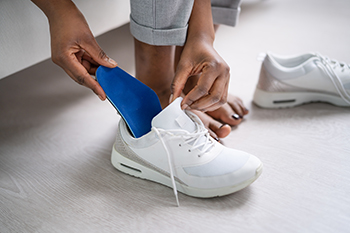
Custom-made orthotics play a vital role in ensuring comfortable and pain-free running for individuals over the age of 50. As we age, the natural wear and tear on our feet and lower limbs can lead to various biomechanical issues and discomfort during physical activities like running. Custom orthotics are tailored to the specific needs of individuals, making them particularly effective in addressing age-related foot problems. One of the primary benefits of custom orthotics is their ability to provide optimal support and alignment for the feet, which becomes increasingly important as people age. These orthotic devices help redistribute pressure evenly across the foot, reducing the risk of common issues like plantar fasciitis, arch pain, and joint strain. Moreover, custom orthotics can correct gait abnormalities and overpronation, which tend to become more prevalent with age. By promoting proper biomechanics, orthotics enhance stability, reduce the risk of falls, and alleviate discomfort associated with running. Custom-made orthotics are designed to fit comfortably inside running shoes, ensuring a snug and supportive fit. This added cushioning and support help absorb shock during each stride, reducing the impact on joints and minimizing the risk of injury. If you are concerned about being able to run comfortably as you age, it is suggested that you schedule an appointment with a podiatrist for a conversation about how wearing custom-made orthotics can benefit you.
If you are having discomfort in your feet and would like to try orthotics, contact one of our podiatrists from Parkwood Podiatry. Our doctors can provide the care you need to keep you pain-free and on your feet.
What Are Orthotics?
Orthotics are inserts you can place into your shoes to help with a variety of foot problems such as flat feet or foot pain. Orthotics provide relief and comfort for minor foot and heel pain but can’t correct serious biomechanical problems in your feet.
Over-the-Counter Inserts
Orthotics come in a wide variety of over-the-counter inserts that are used to treat foot pain, heel pain, and minor problems. For example, arch supports can be inserted into your shoes to help correct overarched or flat feet, while gel insoles are often used because they provide comfort and relief from foot and heel pain by alleviating pressure.
Prescription Orthotics
If over-the-counter inserts don’t work for you or if you have a more severe foot concern, it is possible to have your podiatrist prescribe custom orthotics. These high-quality inserts are designed to treat problems such as abnormal motion, plantar fasciitis, and severe forms of heel pain. They can even be used to help patients suffering from diabetes by treating foot ulcers and painful calluses and are usually molded to your feet individually, which allows them to provide full support and comfort.
If you are experiencing minor to severe foot or heel pain, it’s recommended to speak with your podiatrist about the possibilities of using orthotics. A podiatrist can determine which type of orthotic is right for you and allow you to take the first steps towards being pain-free.
If you have any questions please contact our offices located in Brunswick and Hinesville, GA . We offer the newest diagnostic and treatment technologies for all your foot and ankle needs.
Do You Suffer From Painful Feet?
Definition and Causes of Foot Blisters
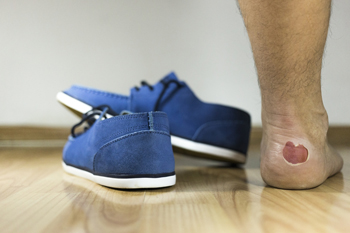
Foot blisters are small fluid-filled sacs that form on the skin, and are a common ailment with multifaceted origins. Foot blisters typically arise from friction, where repetitive rubbing between the shoe and the skin causes layers of the epidermis to separate. Wearing ill-fitting footwear, especially when new or improperly broken in, is a primary catalyst for developing foot blisters. Intense physical activity or prolonged periods of standing can exacerbate the issue, as the feet endure heightened levels of pressure and moisture. Additionally, moisture itself, whether from sweat or wet conditions, softens the skin, making it more susceptible to blister formation. If you have a foot blister or if an existing foot blister has become infected, it is suggested that you consult a podiatrist who can offer you correct treatment and prevention tips.
Blisters are prone to making everyday activities extremely uncomfortable. If your feet are hurting, contact one of our podiatrists of Parkwood Podiatry. Our doctors can provide the care you need to keep you pain-free and on your feet.
Foot Blisters
Foot blisters develop as a result of constantly wearing tight or ill-fitting footwear. This happens due to the constant rubbing from the shoe, which can often lead to pain.
What Are Foot Blisters?
A foot blister is a small fluid-filled pocket that forms on the upper-most layer of the skin. Blisters are filled with clear fluid and can lead to blood drainage or pus if the area becomes infected.
How Do Blisters Form?
Blisters on the feet are often the result of constant friction of skin and material, usually by shoe rubbing. Walking in sandals, boots, or shoes that don’t fit properly for long periods of time can result in a blister. Having consistent foot moisture and humidity can easily lead to blister formation.
Prevention & Treatment
It is important to properly care for the affected area in order to prevent infection and ease the pain. Do not lance the blister and use a Band-Aid to provide pain relief. Also, be sure to keep your feet dry and wear proper fitting shoes. If you see blood or pus in a blister, seek assistance from a podiatrist.
If you have any questions, please feel free to contact our offices located in Brunswick and Hinesville, GA . We offer the newest diagnostic and treatment technologies for all your foot care needs.
Definition and Risk Factors of Plantar Warts
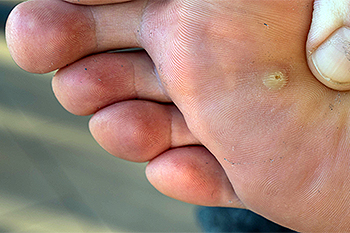
Plantar warts, small growths caused by the human papillomavirus, or HPV, often appear on the soles of the feet. Unlike common warts, which typically grow on the hands, plantar warts can be painful due to the pressure exerted on the soles when walking or standing. These warts may have a rough, grainy appearance with tiny black dots, which are actually clotted blood vessels. Several risk factors increase the likelihood of developing plantar warts. Close contact with the virus, such as walking barefoot in damp and communal areas like locker rooms, swimming pools, or public showers, can put your feet at risk. Additionally, those with a weakened immune system, such as individuals with diabetes or HIV, are more susceptible to plantar warts. Constantly moist or sweaty feet can provide an ideal environment for the virus to thrive. If you have developed a plantar wart, it is strongly suggested that you consult a podiatrist who can provide relief with appropriate treatment methods.
Plantar warts can be very uncomfortable. If you need your feet checked, contact one of our podiatrists from Parkwood Podiatry. Our doctors will assist you with all of your foot and ankle needs.
About Plantar Warts
Plantar warts are the result of HPV, or human papillomavirus, getting into open wounds on the feet. They are mostly found on the heels or balls of the feet.
While plantar warts are generally harmless, those experiencing excessive pain or those suffering from diabetes or a compromised immune system require immediate medical care. Plantar warts are easily diagnosed, usually through scraping off a bit of rough skin or by getting a biopsy.
Symptoms
- Lesions on the bottom of your feet, usually rough and grainy
- Hard or thick callused spots
- Wart seeds, which are small clotted blood vessels that look like little black spots
- Pain, discomfort, or tenderness of your feet when walking or standing
Treatment
- Freezing
- Electric tool removal
- Laser Treatment
- Topical Creams (prescription only)
- Over-the-counter medications
To help prevent developing plantar warts, avoid walking barefoot over abrasive surfaces that can cause cuts or wounds for HPV to get into. Avoiding direct contact with other warts, as well as not picking or rubbing existing warts, can help prevent the further spread of plantar warts. However, if you think you have developed plantar warts, speak to your podiatrist. He or she can diagnose the warts on your feet and recommend the appropriate treatment options.
If you have any questions please feel free to contact our offices located in Brunswick and Hinesville, GA . We offer the newest diagnostic and treatment technologies for all your foot and ankle needs.

